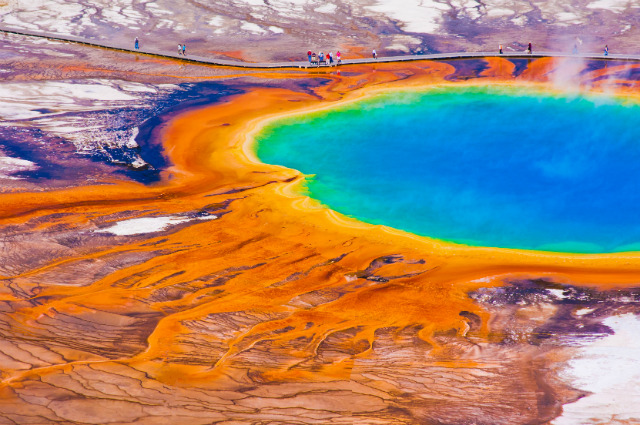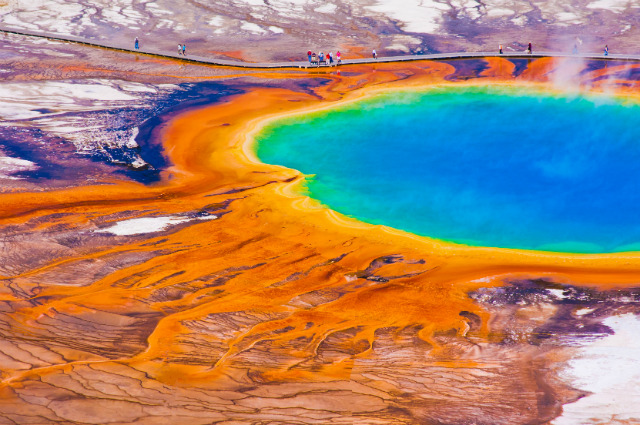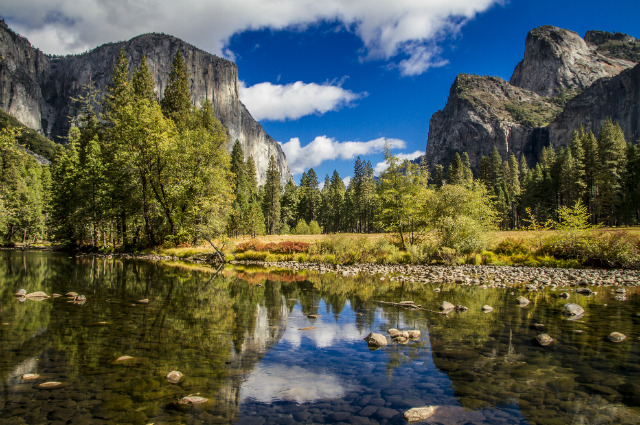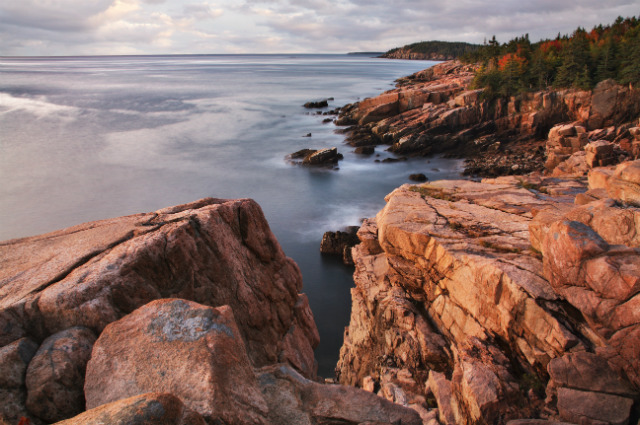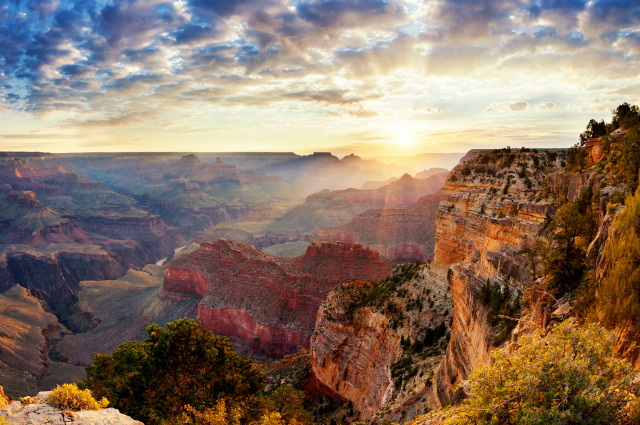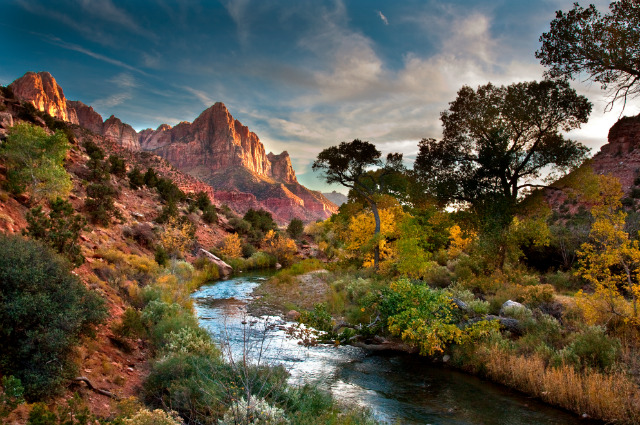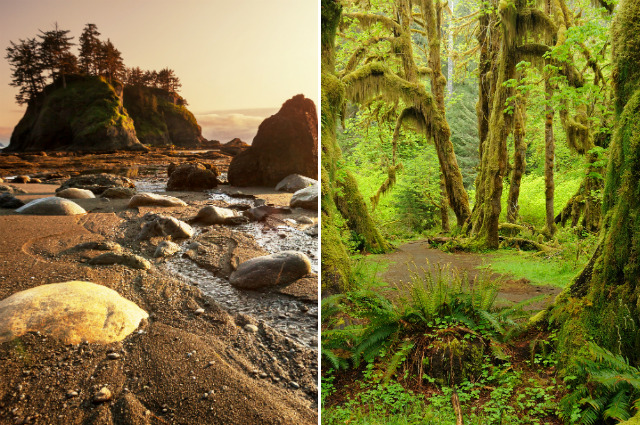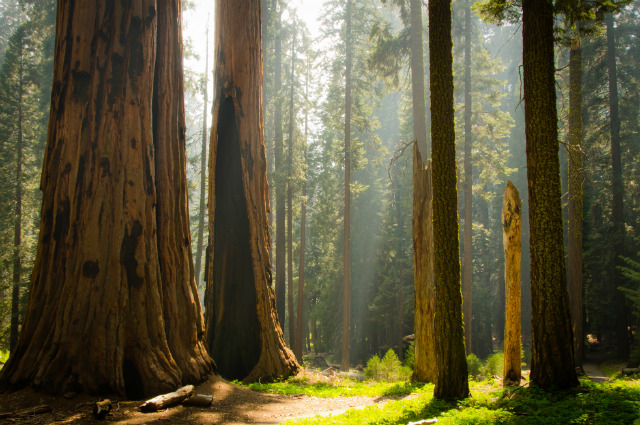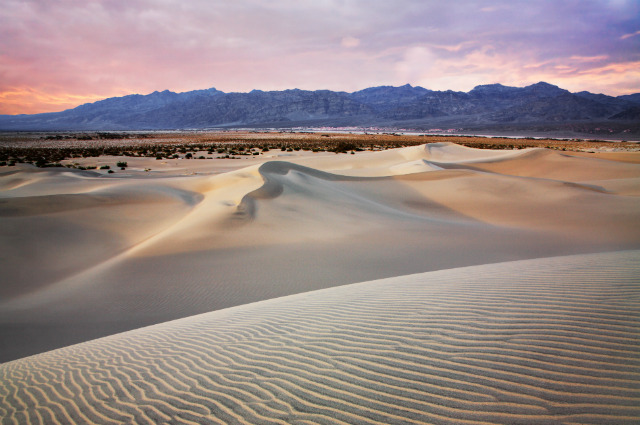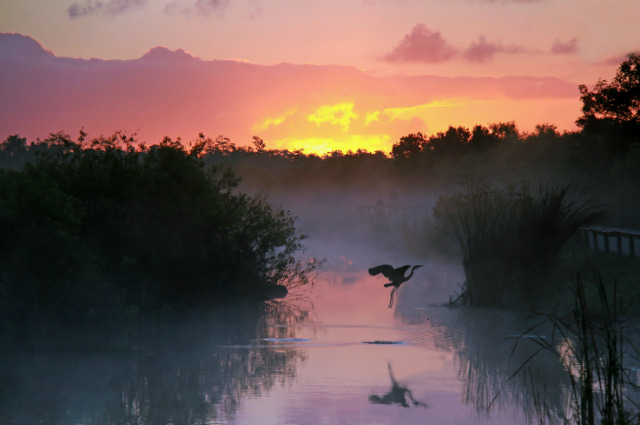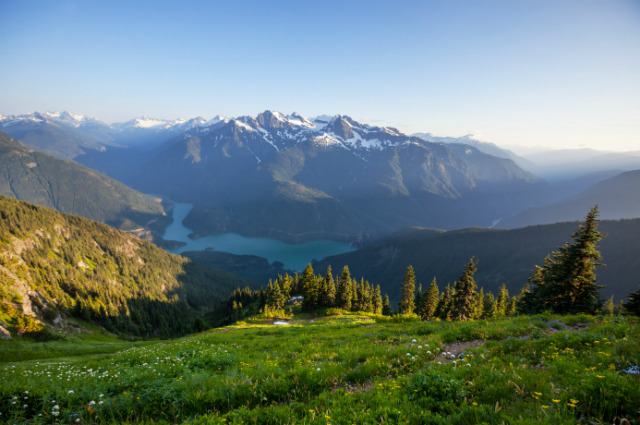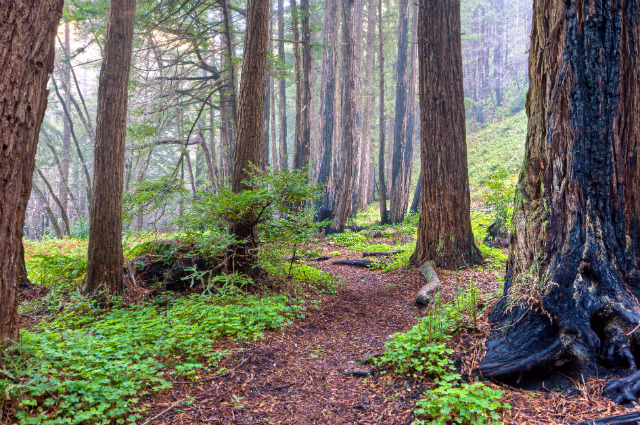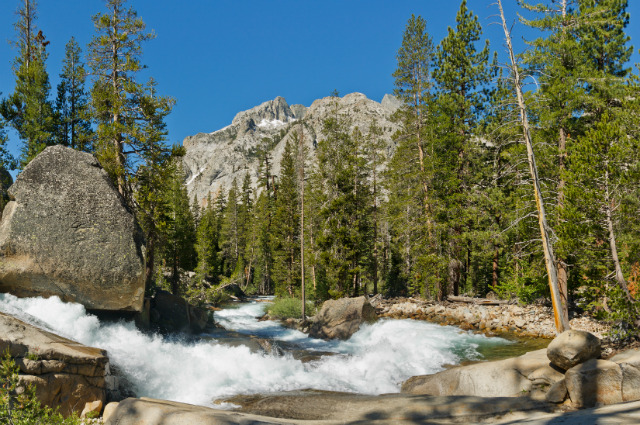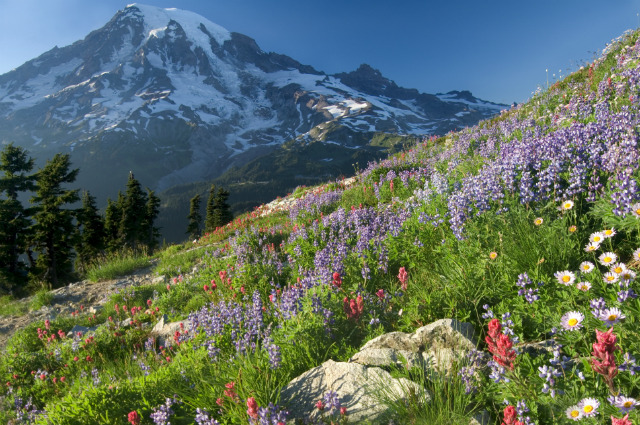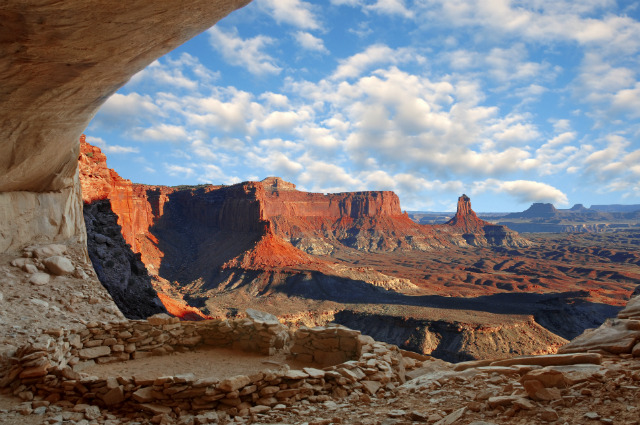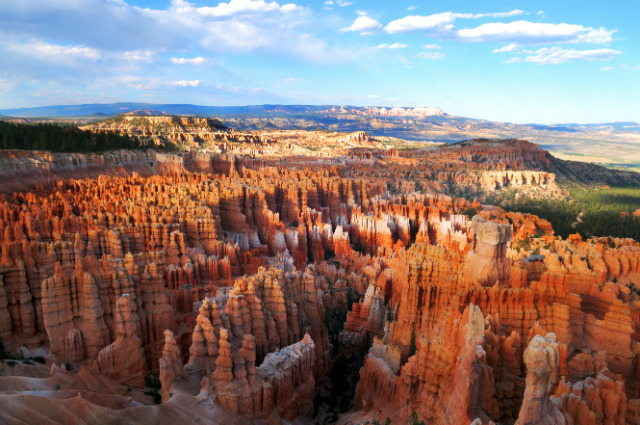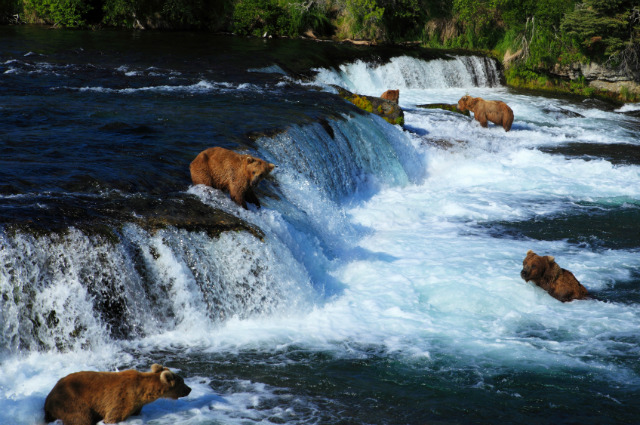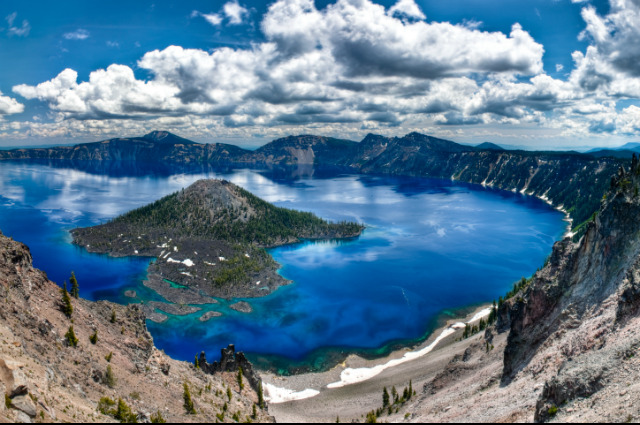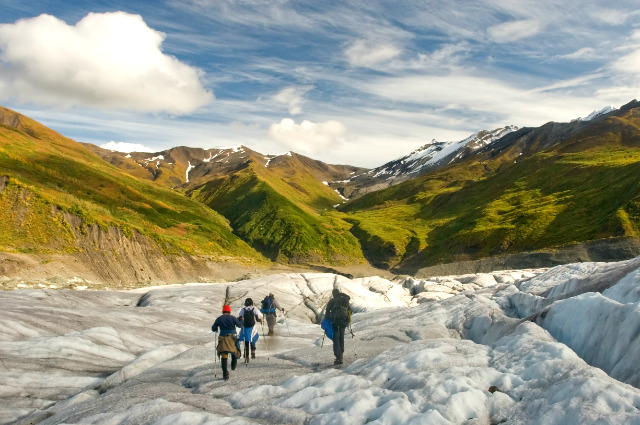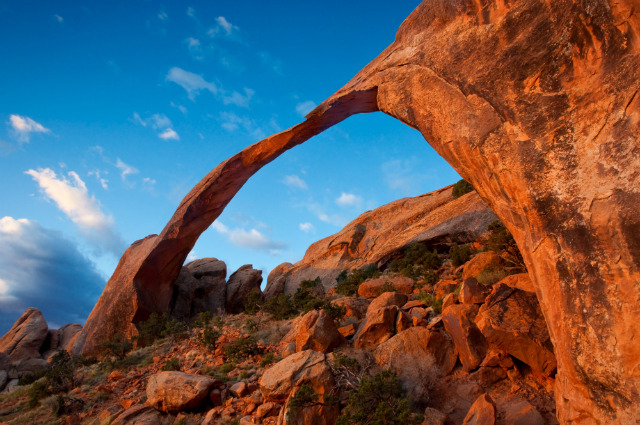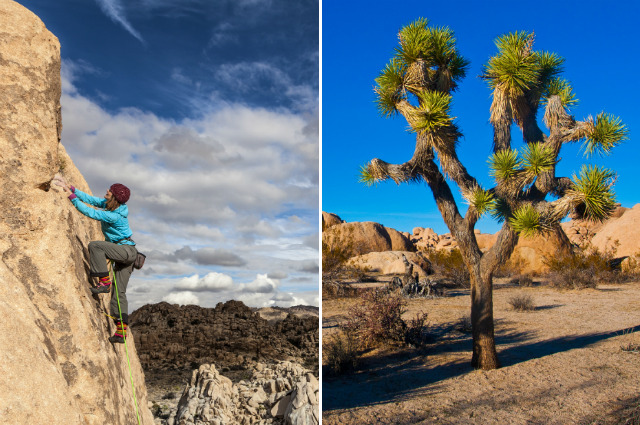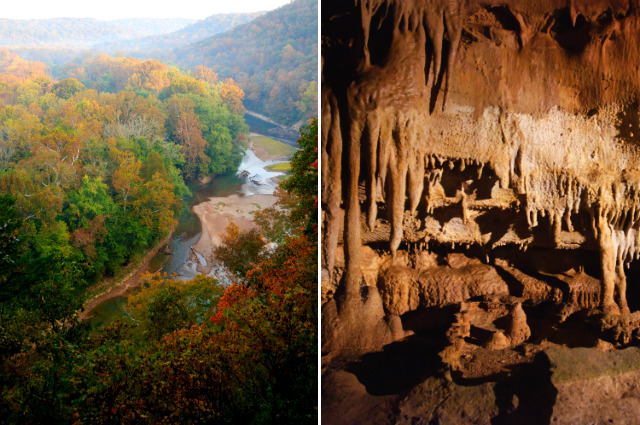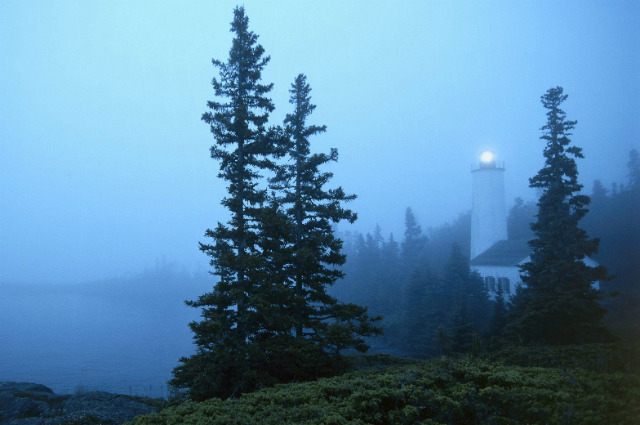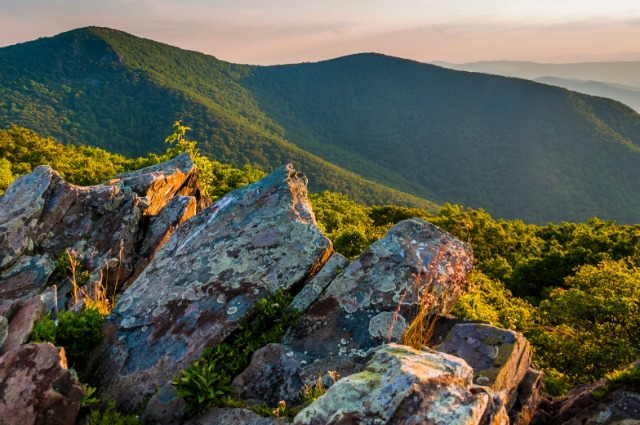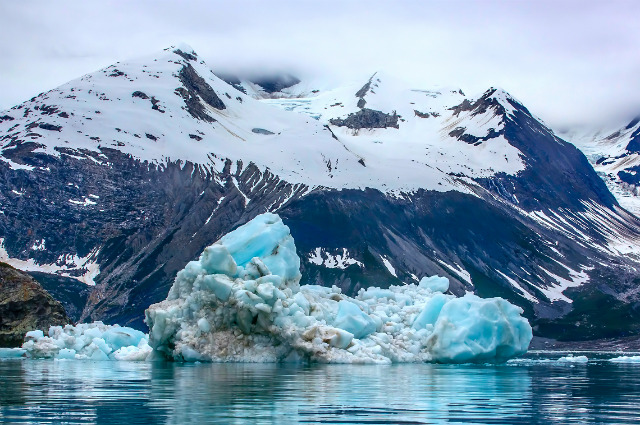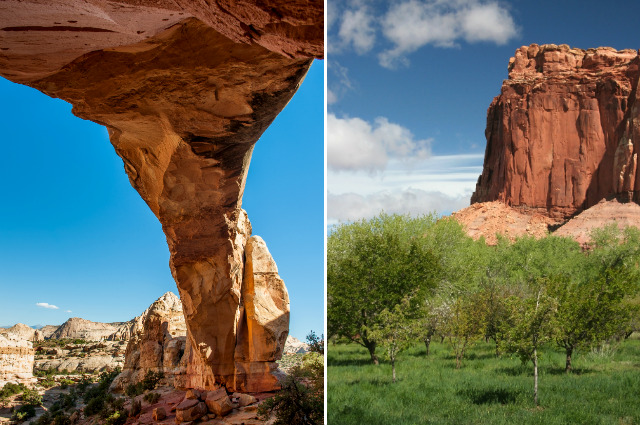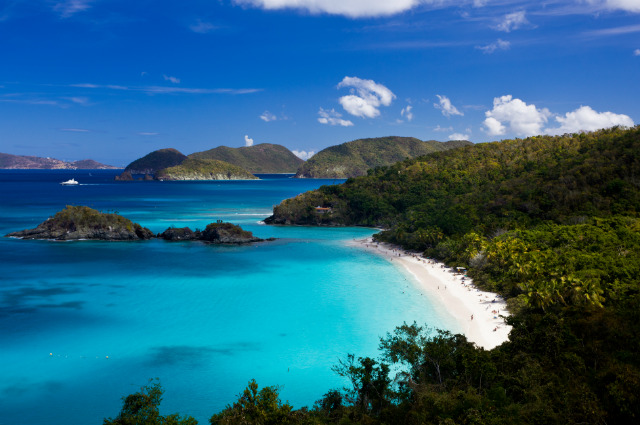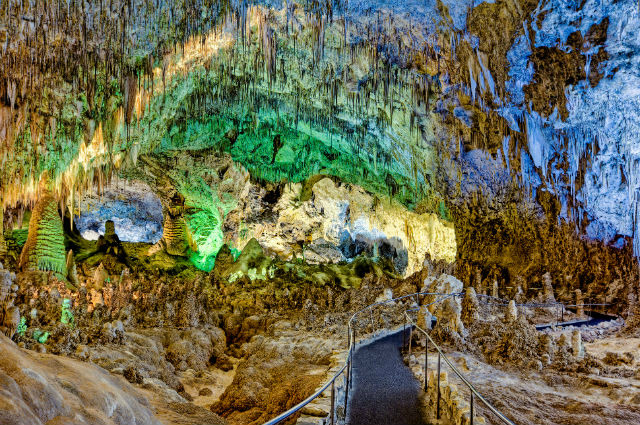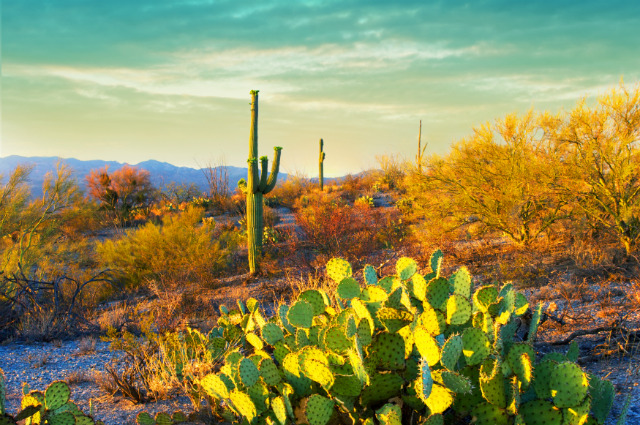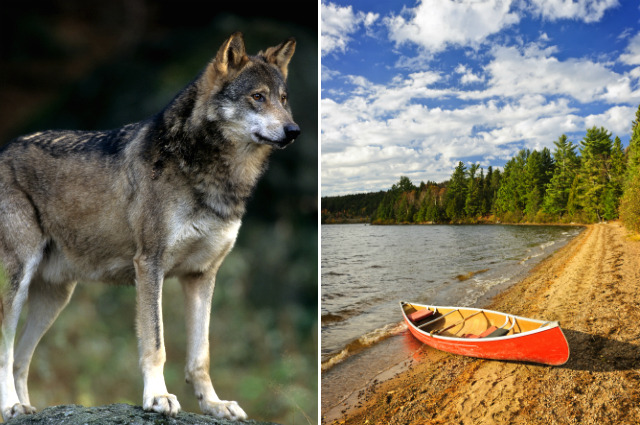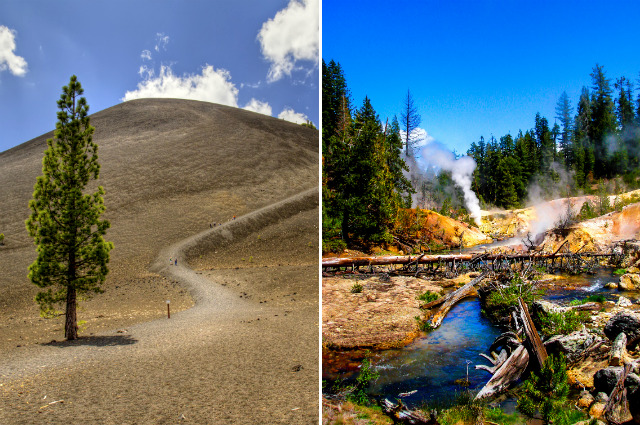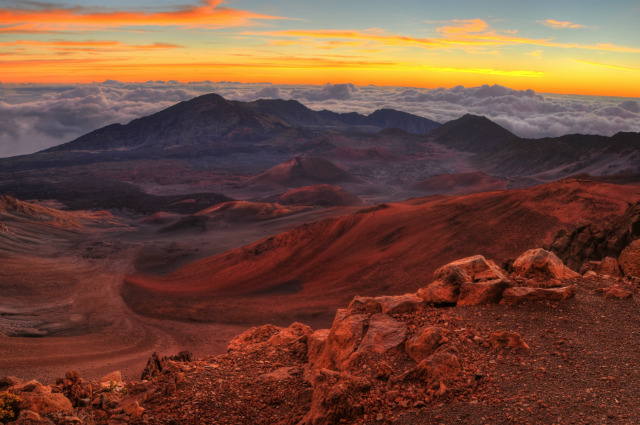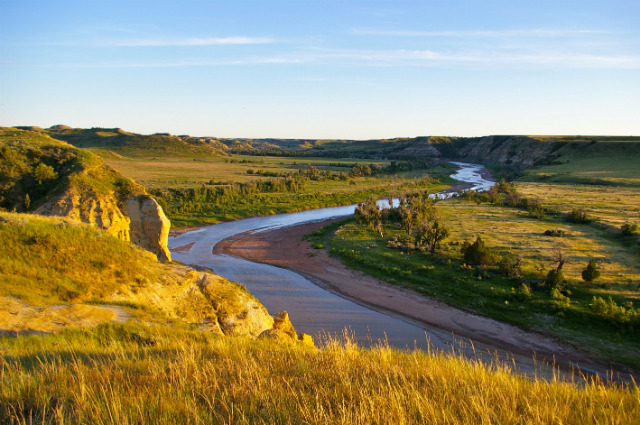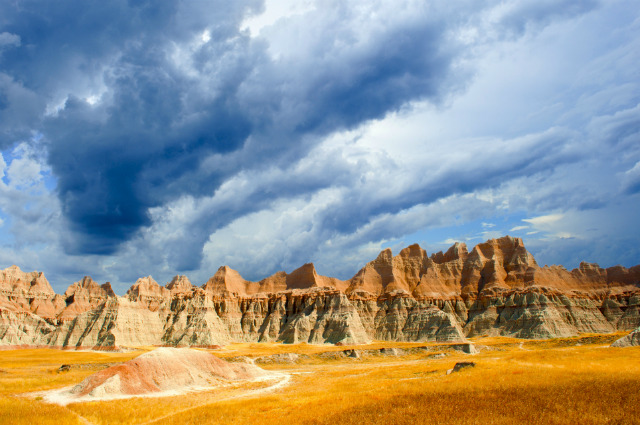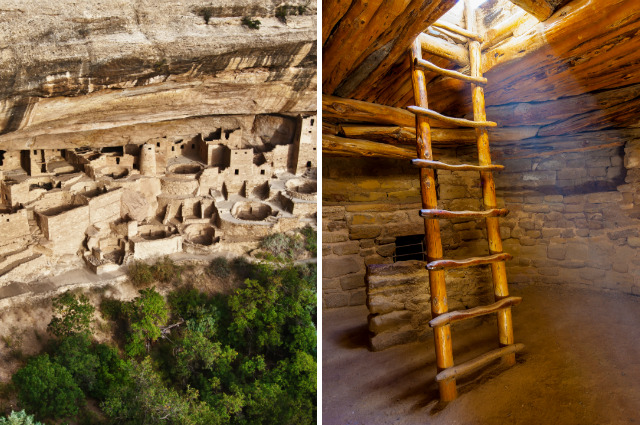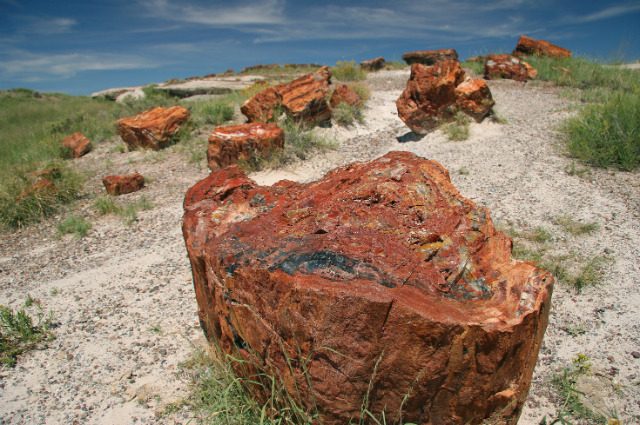The Absolute Best National Parks
We may receive a commission on purchases made from links.
#1 Yellowstone National Park
Location: Wyoming
Ranking Score: 89.5
"Not only is this the world's first national park, but within its 2.2 million acres you'll find the world's largest collection of thermal features, a kingdom of wildlife representative of that which existed long before it became a national park, and incredible backcountry trails—both for hiking and paddling. Yellowstone draws millions each year, and its front-country can be incredibly crowded in July and August, but head down a trail, paddle across a lake, or return in winter to confront temperatures falling to -40º F, and you'll encounter experiences not soon forgotten."
—Kurt Repanshek
#2 Yosemite National Park
Location: California
Ranking Score: 86.9
"The Yosemite Valley is iconic, but draws 95 percent of the park's visitors to a slender valley a mile wide and seven miles long. A day spent there is enough; then head up onto the Tioga Road and experience many of the fine trails that dart off from it and take you past granite domes, refreshing alpine lakes and streams, and into forests of pine."
—Kurt Repanshek
"Hanging on a portaledge (a hanging tent that climbers bolt to cliff walls) for the night, I appreciated that nowhere else in the world are there so many big and sheer rock walls providing exceptional rock-climbing, which are so accessible, and situated in a valley as beautiful as the one which spread out two thousand feet below. Yet the valley is only 5% of Yosemite, and the rest of the backcountry is also full of gems."
— QT Luong
#3 Acadia National Park
Location: Maine
Ranking Score: 79.9
"Say what you will about the West, but the Maine Coast is simply as iconic an American landscape as exists. The park's awesome network of historic, evergreen-lined, view-packed carriage roads is one of the few places to ride mountain bikes in a national park. Stop at scenic ponds and coastal views. Have a great lunch at the Jordan Pond House. If you like lobster, the tiny, off-the-beaten-path towns in the park offer a true taste of Maine."
— Randy Johnson
#4 Glacier National Park
Location: Montana
Ranking Score: 79.5
"Glacier is considered by many one of the 'crown jewels' of our national parks. When someone as well traveled as John Muir declared it 'the best care-killing scenery on the continent,' you know you have to see it to believe it. Add over 700 miles of trails, and the famous Going-to-the-Sun Road for cycling, and you have the perfect recipe."
—Dan Austin
#5 Grand Canyon National Park
Location: Arizona
Ranking Score: 76.9
"Over 1.2 million acres following the Colorado River. The gorge itself is 18 miles wide at one point and a mile deep. It humbles us all, and only a fraction of it is visible from any one point."
—Dan Austin
"No explanation needed. I'd rank it higher except for the fact that, for the average visitor, very little of its grandeur is practically accessible. That, of course, is both a bad and a good thing."
—Mel White
"Although I had visited the rims several times, I did not realize the scale of the abyss until I hiked from the North Rim to the Colorado River, discovering on the way oases, waterfalls and a slot canyon."
—QT Luong
#6 Grand Teton National Park
Location: Wyoming
Ranking Score: 74.5
"Some might argue, but the Teton Range is the most arresting mountain range in the Lower 48. The way the Tetons soar up from the Jackson Hole Valley will take anyone's breath away. Though humanity is relatively close by—a U.S. highway passes through the park, and there's actually an airport located within the park's boundaries—Grand Teton is a rugged park that shouldn't be taken lightly. It's challenging for climbers, the Teton Crest Trail is a wonderful multi-day hike in a drop-dead gorgeous setting, and the resident fauna counts grizzly bears, wolves, mountain lions, and perhaps a wolverine or two. For those not ready to explore the park with a backpack, the front country areas offer shimmering lakes, the iconic Oxbow Bend of the Snake River with its waterfowl, and great day hiking and paddling possibilities."
—Kurt Repanshek
#7 Zion National Park
Location: Utah
Ranking Score: 69
"The whole state of Utah should be a national park, and at the risk of offending all of the other amazing places, this park and Bryce Canyon are the most superlative. The Narrows and The Subway may be the most amazing hikes in the entire National Park System."
—Joel Saferstein
#8 Olympic National Park
Location: Washington
Ranking Score: 68.7
"Three parks in one is perhaps the best way to describe Olympic. There's the Pacific Coast with camping options and tidal pools to explore, the lush, temperate rain forests of the Hoh, Quinault, Queets and Bogachiel valleys with their curious life forms, and the high country with its glaciers and mountains. Olympic offers eye candy for front-country travelers, but the lack of a cross-park road means this is a park seen best with a pack on your back."
—Kurt Repanshek
More Info
#9 Sequoia National Park
Location: California
Ranking Score: 67.8
"Huge trees that frame the mountains. Mountains into which you can vanish for days on end. Rushing rivers. In terms of sheer visitation, Sequoia is a quieter version of Yosemite, one where the massive sequoia trees and trails that head off into the mountains—not soaring granite cliffs—are the main attraction. But it's somewhat of a deceiving park, too, as it harbors an underworld shown off in Crystal Cave. But that's just the drawing card. There are more than 250 caves beneath Sequoia and its adjoining sibling, Kings Canyon National Park. Some have rooms 50 feet across and 6-foot-long "soda straws." Sequoia is definitely more than it appears to be."
—Kurt Repanshek
More Info
#10 Denali National Park & Preserve
Location: Alaska
Ranking Score: 65.8
"We all know about Denali National Park, with its more than 6 million acres of Alaskan wilderness. If you're lucky enough, a visit will be rewarded with a glimpse of the magnificent Mount McKinley, our continent's highest peak at 20,320 ft. The challenge here might be traveling the 92 miles of park road into the heart of the park, but the further you go, the more you will see... and it's all part of the adventure."
—Dan Austin
#11 Death Valley National Park
Location: California & Nevada
Ranking Score: 64.2
"This immense park spans large elevation differences, with unique geology including salt flats and moving stones on mud flats. I enjoy wandering on the dunes at night, after sunset, when the temperature is cooler and other visitors have left. Although the dunes are relatively small, when in a valley it is easy to imagine that they stretch forever."
—QT Luong
#12 Everglades National Park
Location: Florida
Ranking Score: 63.7
"Broiling heat, stupefying humidity, hellclounds of mosquitos, invasive species... What's not to love? I love: the diversity of wildlife from butterflies to reptiles, the subtropical flora unique in the United States, the chance to see a crocodile, the canoe trails, the wide-open spaces where nobody ever goes."
—Mel White
#13 Rocky Mountain National Park
Location: Colorado
Ranking Score: 62.6
"Not just my favorite national park but my favorite place on the planet. Staggering beauty, great wildlife, trails from easy strolls to endurance tests, and a wider range of habitats than many people expect. Mid-September is my favorite time, but early summer is nice, too. Do the Chasm Lake hike, but not on the day that I go."
—Mel White
#14 North Cascades National Park
Location: Washington
Ranking Score: 61
You'll be forgiven if you confuse Washington's North Cascades National Park for a scene right out of Switzerland: With its jagged, glacier-topped peaks, pine-forested valleys, green meadows and mirror-still lakes and ponds, it's not hard to see why this range has earned its nickname of the American Alps. Spanning over 9,000 vertical feet, the park encompasses a wildly diverse range of ecosystems, from temperate rainforests to dry ponderosa pine. As a result, the park can support the largest number of plant species of any American national park at about 1,630, in addition to animals like the ubiquitous banana slug and easy-to-spot mountainside critters like hoary marmots and pikas.
—Nicholas DeRenzo
"This is one of our least-visited national parks. At 684,000 acres, there's noticeably less infrastructure in this park than most others, which is partially due to its inhospitable winters. What it does have are some 380-plus miles of some of the best hiking trails on the planet."
—Dan Austin
#15 Redwood National Park
Location: California
Ranking Score: 60.2
"You want to cry when you realize how much of this incredible forest existed before the timber companies found it. Console yourself at places like Lady Bird Johnson Grove and Howland Hill Road. Return to a smaller scale of the natural world by exploring the tidepools at Enderts Beach near Crescent City, just one of the park's many non-redwood habitats."
—Mel White
#16 Kings Canyon National Park
Location: California
Ranking Score: 59.1
"This park is often overshadowed by, or considered to be the same as, Sequoia, though it's one of most beautiful parks in the US—you just have to hike a ways to get to the goods. The John Muir Trail travels through the park; Le Conte Canyon and Evolution Valley are among the most popular destinations for backpacking. At 13,200 feet, Forester Pass is highest and arguably the most challenging pass on the John Muir Trail."
—Monica Prelle, freelance travel writer
#17 Great Smoky Mountains National Park
Location: North Carolina & Tennessee
Ranking Score: 59
"Though this park counts the greatest number of yearly visitors among national parks—nearly 9.7 million in 2012—that doesn't mean you can't find solitude. Just hike off into the backcountry. The mix of vegetation—a tangle of rhododendron, magnolia, mountain laurel as well as grassy balds and hardwood forests—is a treat in its own right. Plus, the vegetation harbors some of the greatest biodiversity in the East; so much that scientists are still trying to fully chronicle and understand what lives there. Add the history of the Cherokee and the early mountaineers with this beautiful landscape and you've got a park of many dimensions."
—Kurt Repanshek
#18 Mount Rainier National Park
Location: Washington
Ranking Score: 53.6
"This single summit with the Lower 48's biggest glacier is a truly spectacular sight. Classic 'grand lodge' national park lodging is available at the Paradise Inn and the low-key National Park Inn at Longmire. Take a hike at the Sunrise area—the park's highest—for great views of the peak. Or hike the 93-mile Wonderland Trail around the entire mountain—one of the country's greatest long-distance hikes.
—Randy Johnson
#19 Canyonlands National Park
Location: Utah
Ranking Score: 52.9
"Red-rock landscapes here leave their imprints on your brain. Hike into the Needles District and you'll encounter rock minarets seemingly sculpted by giants using clay in red, orange, bluff and brown hues. Come May, this setting flares with blossoms of claret cup cactus, orange globemallow, vivid red Desert Indian paintbrush and western peppergrass with its delicate white blooms. History is painted on some of these rock faces by cultures that roamed here thousands of years ago and left behind curious pictographs and petroglyphs. The Colorado River, meanwhile, offers days of thrills for paddlers."
—Kurt Repanshek
#20 Big Bend National Park
Location: Texas
Ranking Score: 46.8
"You can't be a birder and not visit Big Bend (I am one). In fact, a 15-passenger van in the park is either a birdwatching tour group or a university geology class studying this chaotic textbook of earth's past. With the Rio Grande, the Chihuahuan Desert and the Chisos Mountains, this is like three different parks in the same location. If you can make only one visit, make it in spring after a wet winter for a fantastic wildflower display."
—Mel White
#21 Channel Islands National Park
Location: California
Ranking Score: 43.7
"Each of the five surprisingly wild islands has its own character, abundant wildlife and flora (some endemic), and rewards exploration by hiking, paddling and SCUBA diving. Diving in the kelp—the fastest growing plants in the world—felt like flying within a tall forest, moving freely in three dimensions."
—QT Luong
#22 Bryce Canyon National Park
Location: Utah
Ranking Score: 42.8
"Bryce Amphitheater is one of the most unique geological oddities in the world."
—Mike Oswald
#23 Katmai National Park & Preserve
Location: Alaska
Ranking Score: 42.6
"During Novarupta's eruption in 1912, the largest recorded in modern times, a verdant valley became a desert buried in 700 feet of pumice, ash and vapor-emitting fumaroles, known thereafter as the Valley of Ten Thousand Smokes. This otherworldly environment contrasts with the verdant lakes and rivers that form the largest spawning grounds of sockeye salmon, attracting the largest brown bear population in the world. As I was busy framing bear footprints on the shore of Naknek Lake, I didn't realize that a brown bear was approaching me from behind until he was a few yards away."
—QT Luong
#24 Crater Lake National Park
Location: Oregon
Ranking Score: 42.5
"Crater Lake's waters are said to be so blue and pristine that early photographs were returned by Kodak as overdeveloped at no charge, due to the rich blues. Few will ever forget that first glimpse when they climb to the crater's edge for the view of the 21-square-mile lake."
—Dan Austin
#25 Wrangell-St. Elias National Park & Preserve
Location: Alaska
Ranking Score: 41.5
This largest of all national parks—at more than 13 million acres, it's bigger than Switzerland—is a land of such superlatives that it's hard to wrap your head around. Four mountain ranges containing nine of the country's 16 tallest peaks. More than 150 glaciers, including one—Malaspina—that's bigger than Rhode Island. Still, it's far enough south that it's one of Alaska's more accessible parks, with two unpaved roads delivering recreational hikers, kayakers, rafters and climbers to a seemingly limitless wilderness.
—Peter Koch
#26 Arches National Park
Location: Utah
Ranking Score: 40.4
"Wilderness is not a luxury, but a necessity of the human spirit," wrote Edward Abbey in his famous book Desert Solitaire. This work, along with the growing popularity of adventure-based recreation, helped put Arches on the map. Today, the national park attracts hikers, mountain bikers and—in particular—climbers who come for the chance to scale one of the park's 2,000 natural sandstone arches (Note: Climbing on any arch or natural bridge named on the United States Geological Survey is now prohibited by law). Delicate Arch is the area's most famous feature. Standing 65 feet tall, this iconic landmark is featured on Utah license plates, and was even included in the Olympic torch relay for the 2002 Winter Games.
—Megan Taylor Morrison
"There are more than 2,000 arches within park boundaries, but sandstone features like the Fiery Furnace and Park Avenue are just as captivating."
—Mike Oswald
#27 Joshua Tree National Park
Location: California
Ranking Score: 38.2
With massive boulders and trees that look like they've come straight out of a Dr. Seuss book, this park definitely inspires your imagination. It's great for traditional climbing (and is where I had my first experience), and you can hear coyotes howling at night. The Joshua trees are fascinating in their own right, and—a fun fact here—can only be pollinated by one species of moth.
—Megan Taylor Morrison
#28 Mammoth Cave National Park
Location: Kentucky
Ranking Score: 38.1
"It doesn't have as many spectacular cave formations as does Carlsbad Caverns, but the sheer scale of this cave system makes it impressive. I spent five days underground helping with an archeological survey and learning about the long and fascinating history of this cave, which was intensively used by Native Americans for centuries and then remained unknown for nearly two millennia, until around 1800."
—Mel White
#29 Isle Royale National Park
Location: Michigan
Ranking Score: 37
Wild, isolated, and only reachable by boat or seaplane, this 45-mile-long island in the middle of Lake Superior sees fewer visitors in a year than Yellowstone sees in a day, making it the least-visited national park in the continental U.S. But those who do make the trek out here tend to stay rather than simply pass on through—Isle Royale boasts the highest backcountry overnight use per square acre of any national park. Perhaps its most famous residents are the moose and wolves, whose cat-and-mouse game has been the subject of the longest-running predator-prey study in the world since 1958.
—Nicholas DeRenzo
"Situated in the middle of pristine Lake Superior, you won't find any roads or cars here. Accessed only by boat or plane, Isle Royale is paradise for sea kayakers and backpackers."
—Mike Oswald, author of Your Guide to the National Parks: The Complete Guide to All 58 National Parks
#30 Shenandoah National Park
Location: Virginia
Ranking Score: 36.8
"The bucolic beauty of the Shenandoah Valley from the 100-mile Skyline Drive is a sight you won't forget. Stay in Skyland Lodge, visit Herbert Hoover's Rapidan fishing camp (the original Camp David), and hike the Appalachian Trail—or Old Rag, a rocky spectacular trail. And like the Smokies, the Blue Ridge Parkway also connects to Shenandoah so you can arrive or leave on a long, winding scenic road. Suggestion: Start at either Great Smokies or Shenanadoah and drive the Blue Ridge Parkway to the other park—there's no better mountain national park vacation anywhere in the United States."
—Randy Johnson
#31 Glacier Bay National Park & Preserve
Location: Alaska
Ranking Score: 36.4
"Alaska offers many wonderful national parks, and Glacier Bay is just one of them. But you have to leave Gustavus to really experience it. Day-long cruises up the 75-mile-long bay reveal some of the more than 200 bird species that will fill a hefty section of any birder's life list—horned and tufted puffins, auks, murrelets, murres, Glacous-winged gulls, Black-legged Kittiwakes and more. Better yet, take a week-long cruise with some of small ships that offer daily hiking and kayaking explorations of the park, or head off in a sea kayak for your own private adventure. John Muir was duly impressed when he visited in 1879, and you will be, too."
—Kurt Repanshek
#32 Capitol Reef National Park, Utah
Location: Utah
Ranking Score: 36.1
"Little-known Capitol Reef National Park offers more variety of rock formations than any other national park of the Colorado Plateau. My most memorable visit has been to the Cathedral Valley, a majestic landscape of stone and silence. Adorned by huge monoliths with names such as Temple of the Sun and Temple of the Moon, the place is so remote that during a whole day of driving its primitive roads, I hardly encountered any other vehicles."
—QT Luong
#33 Virgin Islands National Park
Location: US Virgin Islands
Ranking Score: 35.3
"Sugar-sand beaches and colorful coral reefs make this a wonderful park for a relaxing vacation. Snorkeling is a main event here, with numerous beaches from which to explore the reefs with their vibrant marine life—blue tang, yellow sergeant majors, iridescent green parrotfish, silver tubes we know as barracuda and sea turtles the size of steamer trunks. They're all down there beneath the surface, you just have to keep your eyes open. Plus there's the rich, albeit dark, history of the sugar plantations that dates back to the 1600s."
—Kurt Repanshek
#34 Carlsbad Caverns National Park
Location: New Mexico
Ranking Score: 35.2
Although this part of the Chihuahuan Desert is home to more than 118 caves, just three are open to the public. Three miles of the park's namesake Carlsbad cave are paved and lit by electric lights to provide visitors easy access to this underground wonderland that Will Rogers called the "Grand Canyon with a roof on it." Its Big Room is the third largest underground chamber on the continent. Slaughter Canyon Cave and Spider Cave, on the other hand, offer visitors the chance to play caver on guided "adventure" tours. At dawn and dusk, stand at the gaping mouth and witness the spectacle of a quarter-million bats flocking in and out of the cave.
—Megan Taylor Morrison
#35 Cuyahoga Valley National Park
Location: Ohio
Ranking Score: 34
"Cleveland rocks, and so does this park. It bears the same name as the river that caught fire in the late 1960s (which flows through the park), which is why I think this park is so cool. No, it doesn't boast the same grandeur of the western parks, but it does carry a message of the importance of the park service in urban environments, and the possibility of renewal even in the most endangered places."
—Joel Saferstein, owner of American Park Network
More Info
#36 Kenai Fjords National Park
Location: Alaska
Ranking Score: 33.2
"Kenai Fjords is home to some of the more spectacular glaciers left on the planet. Tidewater glaciers like Holgate Glacier are sure to impress as they calve off into Resurrection Bay. The Harding Icefield offers a challenging 3.5-mile hike that is rewarded by endless views of the ice fields."
—Dan Austin
#37 Saguaro National Park
Location: Arizona
Ranking Score: 33
"I love Arizona's Sonoran Desert, even down to the way it smells at dawn in springtime. Surprisingly to many people, one of the best times to visit is during the summer 'monsoon' season of localized rainstorms, when flowers bloom and birds nest. If only this place was bigger..."
—Mel White
#38 Great Basin National Park
Location: Nevada
Ranking Score: 32.9
Located in the underexplored wilderness on the Nevada-Utah border, Great Basin may be one of the only national parks that looks better with the lights turned off: Thanks to its combination of high elevations and extremely low light pollution, the area is considered the best place in the continental U.S. to see the Milky Way, in addition to astronomical wonders like five planets, thousands of stars, meteors, man-made satellites and the Andromeda Galaxy. Luckily, the park also boasts an all-star lineup during the daylight hours, including the 13,063-foot-tall Wheeler Peak, more than 40 stalactite-filled caves, one of the southernmost glaciers in the United States, and a remarkably ancient—we're talking thousands of years old!—collection of bristlecone pines.
—Nicholas DeRenzo
#39 Voyageurs National Park
Location: Minnesota
Ranking Score: 32.2
"Paddlers won't be disappointed with Voyageurs, as not quite half of this 218,200-acre park is water. Whether you envision yourself a latter-day courier du bois or simply are in search of a wolf howl hanging in the evening air, this is an amazing park. Remnants of the boreal forest can be found here, too, as well as some of the oldest rocks in the world. For those fortunate enough to camp in the backcountry, the Northern Lights—the Aurora Borealis—at times can be seen glimmering over Voyageurs."
—Kurt Repanshek, founder and editor of NationalParksTraveler.com
#40 Biscayne National Park
Location: Florida
Ranking Score: 32.1
"Miami's national park has beautiful subtropical snorkeling and islands—with the city still visible on the distant skyline."
—Randy Johnson
#41 Lassen Volcanic National Park
Location: California
Ranking Score: 29.5
Lassen National Park is one of the only locations on Earth where you can see all four types of volcanoes: plug dome, shield, cinder and cone. While Lassen Peak is the most famous, as well as the dominant feature in the park, there are numerous other (literal) hotspots to explore including mud pots, stinking fumaroles and hot springs. The park is also known for its summer nighttime activities. Rangers lead starry night programs from June to August, and the Lassen Dark Sky Festival happens at the end of the season (this year, it's August 9-11).
—Megan Taylor Morrison
#42 Haleakala National Park
Location: Hawaii
Ranking Score: 29.2
"Maui is a popular Hawaiian destination—and nobody who goes there should miss this volcanic national park. It runs from the sea up to the summit crater—reached by a road that's riddled with spectacular hiking opportunities. Sunrise and sunset are unbelievable. And believe it or not, this park (along with the volcanoes on the Big Island) was named a national park back in 1916 when the National Park Service was first formed. Best of all, this otherworldly landscape can be hiked overnight by linking backcountry campgrounds and historic cabins."
—Randy Johnson
#43 National Park of American Samoa
Location: American Samoa Territory
Ranking Score: 28.7
"This remote paradise offers some of the most spectacular tropical scenery I've seen—steep, pointed forested peaks and tall sea cliffs towering above perfect beaches (Ofu is the most beautiful I've seen anywhere) and pristine coral reefs, combined with a unique opportunity to encounter the Samoan culture."
—QT Luong
#44 Theodore Roosevelt National Park
Location: North Dakota
Ranking Score: 28.6
"Certainly among the most underrated national parks, this site combines colorful badlands terrain, riparian habitat along the Little Missouri River, and wildlife both native and non (wild horses and longhorn cattle). The auto-tour route is very nice for casual visitors, but it's far better to hike one of the cross-country trails."
—Mel White
#45 Badlands National Park
Location: South Dakota
Ranking Score: 27.9
"Badlands...isn't that a cool name for a National Park? Cool only in spirit, though, as the parched landscape certainly lives up to its name. The Badlands of South Dakota hold a special place in our history, as we settled the West. They were rarely mentioned affectionately, I am sure. Ironically, the park's beauty is uncompromised, just different."
—Dan Austin
#46 Mesa Verde National Park
Location: Colorado
Ranking Score: 27.7
The purpose of this park, when it was established in 1906, was to "preserve the works of man," rather than to protect pristine wilderness from humans. Here, 1,000-year-old multistory ancestral Puebloan cliff dwellings occupy a series of canyons that carve up the 2,000-foot-high Mesa Verde (Spanish for "Green Table") into narrow tablelands. Archaeologists have located more than 4,800 archaeological sites in the area—including roughly 600 cliff dwellings—that document 750 years of civilization development and change in the lives of the ancestral Puebloan people (from A.D. 550 to 1300). The dry desert air and sheltered placement of the dwellings and villages have kept them remarkably well preserved, so that walking among them is like stepping directly into the past.
—Peter Koch
"The archeological significance of this park makes it paradise for anyone interested in the ancient Native American cultures of the West."
—Randy Johnson
#47 Black Canyon of the Gunnison National Park
Location: Colorado
Ranking Score: 27.2
At almost two billions years old, the steep, ultra-narrow walls of western Colorado's Black Canyon of the Gunnison are among the oldest exposed rock in the world. These geological wonders quite literally overshadow everything else here: The walls are so steep and the canyon so deep that sunlight only reaches the bottom a few hours each day, casting the walls in the dark shadows that give the canyon its colorful name. The nearly vertical cliffs, which reach a height of 2,722 feet from floor to rim, are best left for experienced rock climbers. Amateurs should stick to the three scenic drives, from which you can look out for ravens, golden eagles and Peregrine falcons riding the wind.
—Nicholas DeRenzo
#48 Petrified Forest National Park
Location: Arizona
Ranking Score: 26.7
"Here's a park where it's really important to talk to rangers about areas off the beaten path. There's a lot more to see than just the massive quartz logs, including Native American structures, odd geologic features and grand vistas of the Painted Desert."
—Mel White, author of National Geographic Complete National Parks of the United States
#49 Great Sand Dunes National Park & Preserve
Location: Colorado
Ranking Score: 26.2
Best For: Surfing on sand dunes thousands of miles from the ocean
This 44,000-acre park is home to 750-foot-tall sand dunes—the tallest in North America—which, set against the backdrop of 13,000-plus-foot Rocky Mountain peaks, lend it an otherworldly atmosphere. Funny, then, that it's only a four-hour drive from Denver. Trek across the high desert dunescape, and sled down the sand mountains (the Park Service offers visitors beta on when to go) for a novelty adrenaline rush. When the afternoon sun turns the sand a scorching hot 150ºF, try wading in Medano Creek or soaking in the sounds of nature—a 2008 Soundscape Study by the NPS showed that Great Sand Dunes is the quietest of all the national parks.
—Nicholas DeRenzo
#50 Lake Clark National Park & Preserve
Location: Alaska
Ranking Score: 24.7
Best For: Spotting a brown bear (open lakeshore and coastline allows you to seem them miles away)
Lake Clark boasts a vast diversity of ecosystems and natural features including three mountain ranges, coastline, rainforests, alpine tundra, glaciers, glacial lakes, rivers and two volcanoes. Because of the variety, you have the opportunity to see all of Alaska's well-known animal species—from grizzlies to orcas—and to do many different activities, such as kayaking and hiking. The Kvichak River, which runs through the west side of the park, is the world's most productive watershed for sockeye salmon, which draws droves of brown bears during the run.
—Megan Taylor Morrison
#51 Guadalupe Mountains National Park
Location: Texas
Ranking Score: 22.9
Best For: Spotting marine life (or at least remnants of it) in mountains...in a desert
Hiking through the deserts, canyons and mountains of this West Texas national park, a thriving tropical reef might be the furthest thing from your mind. But this arid landscape hides an ancient secret: More than 250 million years ago, this entire area was completely underwater, leaving behind one of the best-preserved marine fossil reefs on Earth. As you explore its 80 miles of trails or climb to the state's highest point, the 8,751-foot-tall Guadalupe Peak, see if you can spot the thousands of fossils of algae, coral, snails, sea urchins and sponges that incongruously dot the widely bone-dry landscape.
—Nicholas DeRenzo
#52 Hot Springs National Park
Location: Arkansas
Ranking Score: 22.6
Best For: Tapping (literally) into nature's healing powers
This smallest of national park is unique not only in size—only 5,550 acres—but also in that it borders the city of Hot Springs, Arkansas. In fact, the main focus of the park is Bathhouse Row—a collection of eight mineral water bathhouses fed by 47 hot springs that tumble down from the western slope of Hot Springs Mountain—on Central Avenue, the city's main thoroughfare. Take a long soak in the healing waters after a hike on some of the park's 26 miles of wooded trails, which wind up the mountain to a picnic spot with a view.
—Peter Koch
#53 Wind Cave National Park
Location: South Dakota
Ranking Score: 22.2
Best For: Being equally impressed by the beauty above ground and below
Hidden beneath the wildlife-rich South Dakota prairie is one of the world's longest cave systems. Currently mapped to more than 123 miles of subterranean passages, Wind Cave is named for the powerful winds that alternately blow in and out of its mouth to equalize atmospheric pressure. Because it's dry, visitors will see fewer of the stalactites and stalagmites they find in other caves, but the cave is notable for the world's biggest collection of boxwork, a mysterious calcite formation that resembles honeycombs. Above ground, bison, elk, prairie dogs, mule deer and pronghorn graze on lush, open grasslands.
—Peter Koch
"As you arrive at Wind Cave, it would be easy to be swept up by the beauty of the prairie grasses that abound 'on top,' but it's what's down below that's truly spectacular and unique. Discovered back in 1881, there are more than 120 miles of explored passages (and many more yet to be found)."
—Dan Austin, founder and owner of travel experts Austin-Lehman Adventures
#54 Dry Tortugas National Park
Location: Florida
Ranking Score: 21.6
Best For: Diving on an ancient shipwreck in crystal-clear waters
Located some 70 miles west of Key West, Florida's Dry Tortugas National Park is closer to Cuba than it is to mainland America. Its strategic location explains why it houses Fort Jefferson, the largest all-masonry fort in the country, built between 1846 and 1875 to guard the Gulf of Mexico. The seven small islands are accessible only by boat or seaplane, but this isolation has left teeming coral and sea grass communities. The archipelago is a favorite among sea turtles who nest on its shores and gave their name to the islands as early as 1513, when Spanish explorer Juan Ponce de León landed here.
—Nicholas DeRenzo
#55 Hawaii Volcanoes National Park
Location: Hawaii
Ranking Score: 20.2
Best For: Seeing new earth created (Kīlauea's been consistently erupting for 30 straight years)
"On my first outing on the lava fields, I walked for miles on old, hardened lava towards the active flow. During the return hike, I was startled and frightened to see red lava simmering in the dark, shining through cracks right beneath my feet where I thought the ground was solid. I subsequently spent an entire night watching the creation of new earth as hot lava flowed onto the coastal plain and cascaded into the ocean. Next, I camped on the otherworldly summit of Mauna Loa, the biggest mountain on earth [from the ocean floor], almost 14,000 feet high, without seeing a single plant nor another soul on the way, completing my transformative sea-to-summit experience."
—QT Luong, renowned landscape photographer who's visited—and photographed—all 59 parks
#56 Kobuk Valley National Park
Location: Alaska
Ranking Score: 19.7
Best For: Getting an entire river to yourself
Located entirely above the Arctic Circle, this 1.75 million-acre adventure paradise—like its nearby neighbor Gates of the Arctic—isn't easy to access. There are no roads in, and no hiking trails crossing its breadth. But for those who make the journey by bush plane, a fantastical landscape of mountains, braided rivers, tundra, spindly boreal forests and—oddly enough—towering, 150-foot-tall sand dunes awaits. Still, it sees exponentially more caribou than visitors when a twice-yearly migration of half a million of the ungulates crosses this vast wilderness in spring and fall.
—Peter Koch
"The Kobuk Sand Dunes are on my bucket list. It's rare to see people out there, and grizzly bears often roam the area (you can spot their paw prints in the sand)."
—Megan Taylor Morrison
#57 Gates of the Arctic National Park & Preserve
Location: Alaska
Ranking Score: 19.3
Best For: A self-sufficient adventure that's truly on America's "last frontier"
Perhaps the most far-flung of all the national parks is the northernmost park in the system, Gates of the Arctic, which is accessible only by bush plane or (with very careful planning) by foot. The park is located entirely above the Arctic Circle, meaning you'll often see the aurora borealis in the dark winter months while summer brings weeks during which the sun never sets. The wildlife leans appropriately toward the big, bushy and equipped-for-the-cold, so you just might run into muskoxen, moose, caribou or grizzly bears during your stay.
—Nicholas DeRenzo
#58 Pinnacles National Park, California
Location: California
Ranking Score: 17.6
Best For: Rock climbing beneath some of the world's few remaining California Condors
Just over an hour drive from Monterey in the scrubby chaparral east of Central California's Salinas Valley, Pinnacles National Park is far from inaccessible. With its dramatic landscape of boulder caves, canyons and spires left over from the eroded remains of an ancient volcano, it might come as quite a surprise that Pinnacles doesn't rank higher on this list. But while rock climbers have known about this craggy playground for years, many Americans heard about this place for the first time in January, when Barack Obama upgraded the area from a national monument to America's newest national park.
—Nicholas DeRenzo
#59 Congaree National Park
Location: South Carolina
Ranking Score: 16.6
Best For: Paddling through an old-growth forest among some of the tallest trees in the East
"One of the country's most impressive old growth forests is the draw here—especially for kayakers and canoeists who visit from fall to spring, when the bugs and snakes are dormant. The 20-mile paddle trail is a true adventure."
—Randy Johnson, author of numerous national parks guidebooks
